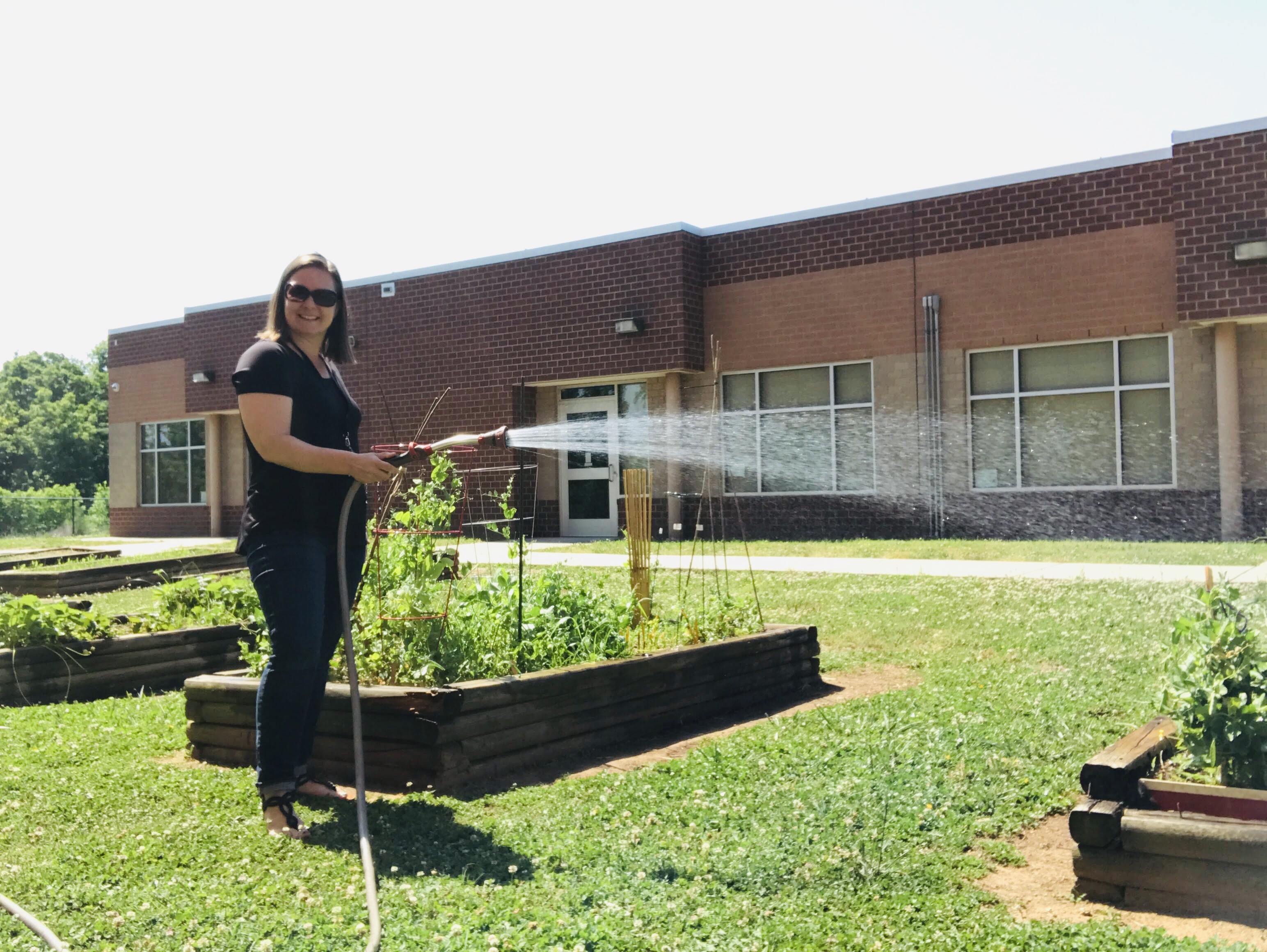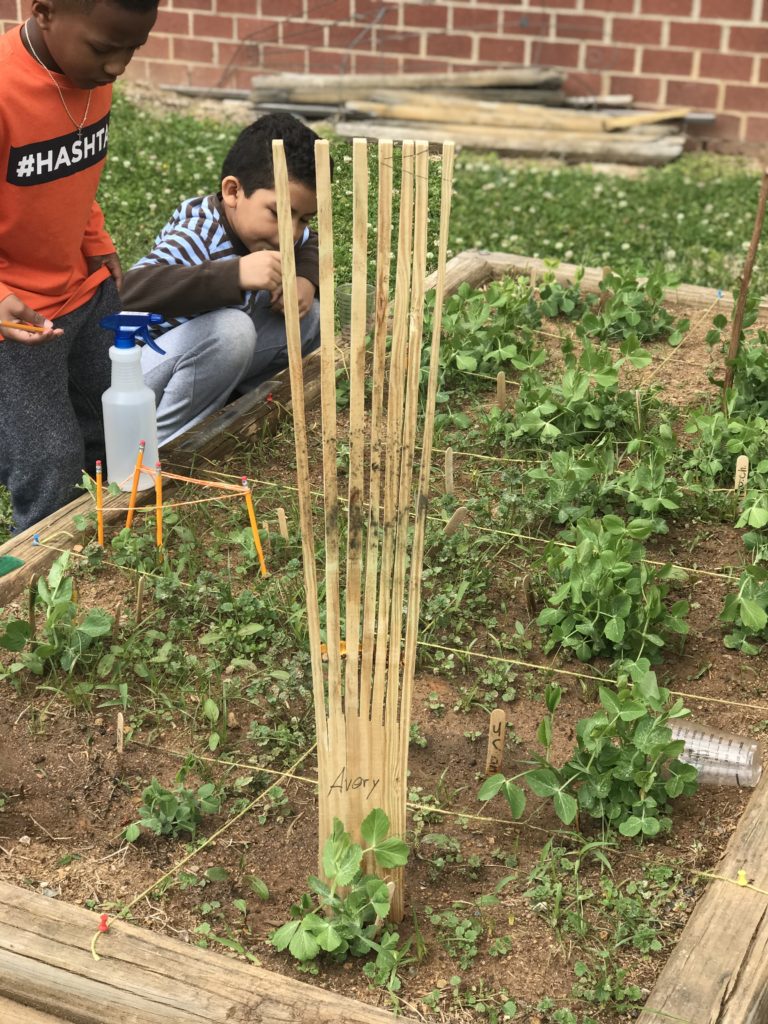Teacher Feature: Juli Roach

 Juli Roach is a second grade teacher at Furr Elementary in Concord, NC. The school garden is mostly a one-woman project, borne of her astonishment eight years ago that her suburban students didn’t know where food came from before arriving at the grocery store. While she would welcome other teachers or grades to participate, no one has joined her yet. She says, “For many teachers it may feel like, one more thing.” But she’s found that it’s really not one extra thing to teach because she can integrate what she’s already teaching. She laughs, noting that second grade is the only elementary grade where plants are not part of the standards, but she hasn’t had any trouble integrating math (measurement, rectangular arrays), science (heritable traits, weather, natural resources, the insect life cycle), social studies (Thomas Jefferson), and writing (how-to books, observation journal).
Juli Roach is a second grade teacher at Furr Elementary in Concord, NC. The school garden is mostly a one-woman project, borne of her astonishment eight years ago that her suburban students didn’t know where food came from before arriving at the grocery store. While she would welcome other teachers or grades to participate, no one has joined her yet. She says, “For many teachers it may feel like, one more thing.” But she’s found that it’s really not one extra thing to teach because she can integrate what she’s already teaching. She laughs, noting that second grade is the only elementary grade where plants are not part of the standards, but she hasn’t had any trouble integrating math (measurement, rectangular arrays), science (heritable traits, weather, natural resources, the insect life cycle), social studies (Thomas Jefferson), and writing (how-to books, observation journal).
As a seasoned gardener now, we asked Juli to share some advice about gardening based on her experiences.
- Follow the “1 new thing” rule
Just tackle “1 new thing” each year and, quite literally, “grow” the garden over time. For two years, she only grew peas and carrots; now her garden plan includes carrots, peas, lettuce, spinach and strawberries. Especially if you’re an amateur green-thumb, it can be easy to overdo and find yourself overwhelmed. Follow the adage, “Start small, dream big.”
- Choose crops that grow to maturity during the school year
Some of the most familiar vegetables, like corn, tomatoes, squash, and cucumbers require warm summer temperatures, and though they can be planted in the spring, the students will be out of school by the much-anticipated harvest time. Cool season veggies are “cool for school!”
- Set clear behavior expectations
Juli says that in the classroom she follows the “3 strikes and you’re out” discipline model, but in the garden, it’s “1 and done.” The first week, she sends a lot of kids back inside, but it instills the rules quickly, and students recognize the garden is a privilege. In the spring, the class spends the last hour of the school day in the garden every nice day. (Juli is part of a Spanish immersion team, so she has two groups of 20 students, alternating every other day.)
- Have procedures in place
In Juli’s classroom, there is a job for everyone; a job that is assigned prior to leaving the classroom. Jobs include: weeding, measuring, recording, watering. Juli carefully selects which students are capable of responsibly using the hose. The watering is otherwise done with a cup and a bucket.
- Share your vision
While it may seem that Juli shoulders the garden, she acknowledges support from others that make it all happen. At the same time Juli saw a need to start a garden, a Boy Scout was looking for an Eagle Project. Her principal connected the two and the Scout raised the funds and built 6 raised beds in the school courtyard. A local church hosts 2 clean-up days at the school and the garden is always included as one of the project areas. She has posted needs or even dreams on Facebook and found friends with connections. Most recently, she wanted to add a butterfly house and a Girl Scout troop stepped up to fill that request. She has received donations from local businesses. She has started including gardening supplies on her classroom Amazon wish list.
She’s also excited to be applying for a grant this year to fund an irrigation system. This year’s “1 new thing” is starting a K-5 Garden Club. While many of her past students are likely participants, others are excited for the opportunity to get their hands dirty and see what the garden is all about.
- Categories: